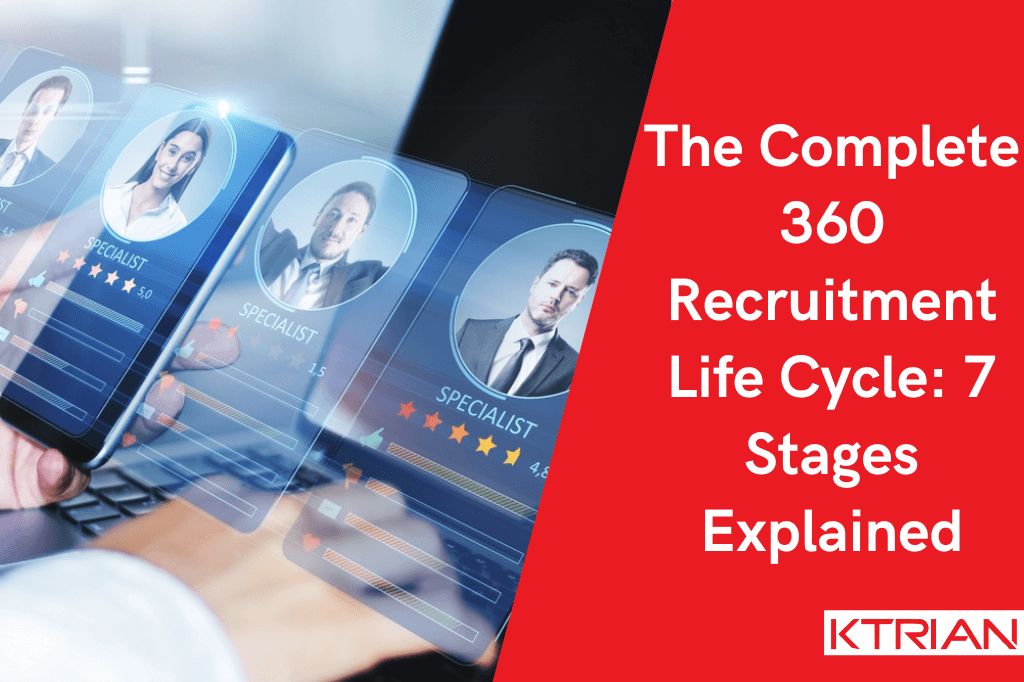The Complete 360 Recruitment Life Cycle: 7
The Complete 360 Recruitment Life Cycle: 7 Stages Explained

Full Life Cycle Recruitment or 360 Recruitment, also known as end-to-end recruitment, is a comprehensive process that encompasses all the stages of recruitment, from identifying the need for a new hire to onboarding the candidate. This article will discuss the 7 stages of the full life cycle recruitment process.
Stage 1: Identify the Job Opening
The first stage in the recruitment process is to identify the job opening. This stage involves identifying the need for a new hire and defining the job requirements, such as the qualifications, experience, and skills needed for the position. The recruiter will work with the hiring manager or department to develop a job description that accurately reflects the responsibilities and expectations of the role.
Stage 2: Sourcing Candidates
Once the job requirements have been defined, the next step is to source candidates. This stage involves identifying and attracting potential candidates through various channels, such as job boards, social media, employee referrals, and professional networks. Recruiters may also conduct direct outreach to passive candidates who are not actively seeking employment but may be a good fit for the role.
Stage 3: Screening and Interviewing Candidates
The screening and interviewing stage involves evaluating candidates to determine if they meet the job requirements and are a good fit for the company culture. Recruiters may use various methods to screen candidates, such as reviewing resumes, conducting phone screenings, and administering skills assessments. Qualified candidates will then be invited for an interview, which may be conducted in person, over the phone, or via video conference.
Stage 4: Selecting the Candidate
After the screening and interviewing stage, the recruiter and hiring manager will collaborate to select the top candidate. This stage involves reviewing candidate feedback, conducting background checks, and negotiating the job offer. The recruiter will work with the candidate to finalize the details of the job offer, such as salary, benefits, and start date.
Stage 5: Onboarding the Candidate
The onboarding stage involves welcoming the new hire to the company and helping them get up to speed with their new role. This stage involves providing the candidate with orientation, training, and access to the necessary resources to be successful in their new position. The recruiter will also work with the candidate to complete any necessary paperwork and ensure a smooth transition into the company.
Stage 6: Retaining the Employee
Retaining the employee is an important stage in the full life cycle recruitment process. This stage involves creating a positive work environment and offering opportunities for career growth and development. Recruiters may work with the hiring manager to provide ongoing feedback, performance evaluations, and support for the employee.
Stage 7: Offboarding the Employee
The final stage in the recruitment process is offboarding the employee. This stage involves separating the employee from the company due to resignation, termination, or retirement. Recruiters may conduct exit interviews to gather feedback and insights from departing employees, which can be used to improve the recruitment and retention process.
Conclusion
In conclusion, the full life cycle recruitment process, also known as 360 recruitment, is a comprehensive approach to recruitment that involves all stages of the recruitment process, from identifying the job opening to offboarding the employee. By following these 7 stages, recruiters can attract and retain top talent, while also ensuring a positive candidate experience and a successful recruitment outcome.
Written By


Nirali Mehta
Author
Last Update
18/04/23 5:30 PM
Category
Share
